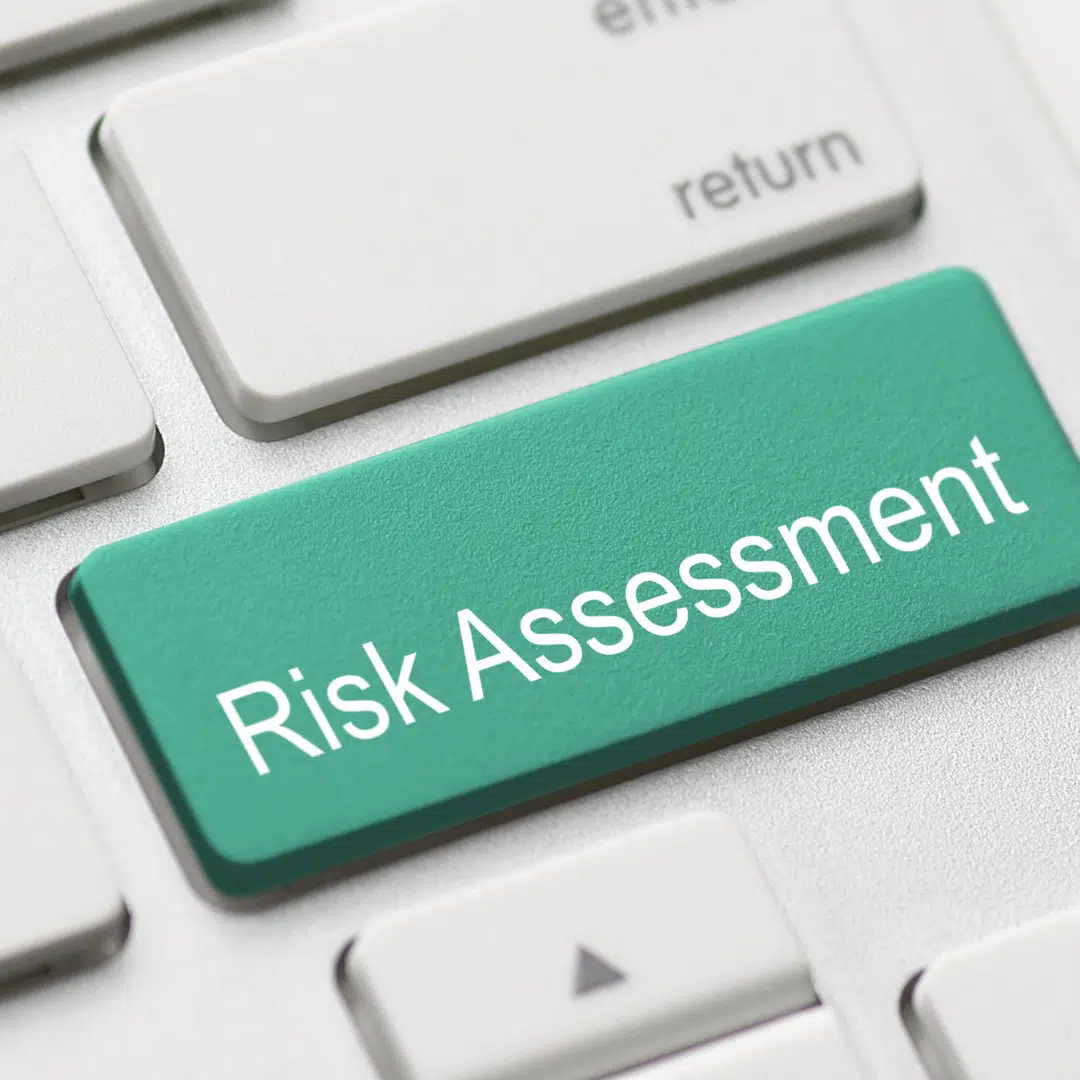

In today’s digital age, where cyber threats are becoming increasingly sophisticated, it is crucial for businesses to prioritise their cybersecurity. Conducting a comprehensive cyber security risk assessment is the first step towards safeguarding sensitive information and protecting against potential data breaches. This essential guide will provide you with a step-by-step process to assess your organisation’s vulnerability to cyber-attacks, identify potential risks, and develop a robust security framework. From evaluating current security measures to identifying potential weak points, this guide will equip you with the knowledge and tools necessary to fortify your digital defenses. With practical tips, expert insights, and real-world examples, you will gain a deeper understanding of the evolving threat landscape and how to effectively mitigate risks. Stay one step ahead of cyber criminals and ensure the safety and integrity of your organisation’s valuable data by following this comprehensive guide to conducting a cyber security risk assessment.
In order to protect your organisation from cyber threats, it is essential to understand the importance of conducting a cyber security risk assessment. A risk assessment allows you to identify potential vulnerabilities and weaknesses in your current security framework, as well as assess the potential impact and likelihood of various cyber security risks. By conducting a thorough assessment, you can gain valuable insights into the specific areas that require attention and develop a targeted risk mitigation plan.
A comprehensive cyber security risk assessment consists of several key components that work together to provide a holistic view of your organisation’s security posture. These components include:
One of the first steps in conducting a cyber security risk assessment is to identify potential threats and vulnerabilities that could compromise your organisation’s security. This involves conducting a thorough analysis of your organisation’s digital assets, systems, and processes to identify any potential weak points.
External threats can include hackers, malware, phishing attacks, and social engineering tactics. These threats are constantly evolving, making it essential to stay up-to-date with the latest trends and techniques used by cyber criminals.
Internal threats, on the other hand, can include employee negligence, unauthorised access to sensitive information, and inadequate security awareness and training. It is important to assess not only the external threats but also the internal vulnerabilities that could be exploited.
By identifying potential threats and vulnerabilities, you can gain a clear understanding of the risks your organisation faces and develop appropriate strategies to mitigate them.
Once potential threats and vulnerabilities have been identified, it is important to assess the impact and likelihood of each risk. This step helps prioritise risks based on their potential consequences, allowing you to allocate resources effectively.
The impact of a cyber security risk refers to the potential harm or damage that could be caused if the risk were to materialise. This can include financial loss, damage to reputation, legal implications, or disruption to business operations.
Likelihood, on the other hand, refers to the probability of a risk occurring. This can be influenced by factors such as the sophistication of potential attackers, the effectiveness of existing security controls, and the overall security posture of your organisation.
By assessing the impact and likelihood of each risk, you can prioritise your efforts and focus on addressing the most critical vulnerabilities first.
As part of a comprehensive cyber security risk assessment, it is important to evaluate the effectiveness of your organisation’s current security controls and measures. This includes reviewing your organisation’s policies, procedures, and technical safeguards to ensure they align with industry best practices.
Start by reviewing your organisation’s cybersecurity policies and procedures. Are they up-to-date? Are they comprehensive enough to address the evolving threat landscape? Assess whether your policies and procedures cover key areas such as access controls, incident response, data protection, and employee training.
Next, evaluate your technical safeguards. This includes assessing the strength of your firewalls, antivirus software, intrusion detection systems, and encryption mechanisms. Are these tools properly configured and regularly updated? Are they capable of detecting and preventing the latest threats?
By evaluating your current security controls and measures, you can identify any gaps or weaknesses that need to be addressed as part of your risk mitigation plan.
A gap analysis is a crucial step in conducting a cyber security risk assessment. It involves comparing your organisation’s current security measures against industry best practices and regulatory requirements to identify any areas for improvement.
Start by identifying the relevant standards and regulations that apply to your organisation. This can include industry-specific standards such as the Payment Card Industry Data Security Standard (PCI DSS) or general data protection regulations such as the General Data Protection Regulation (GDPR).
Once you have identified the relevant standards and regulations, compare your organisation’s current security measures against the requirements outlined in these documents. This will help you identify any gaps or areas where your organisation falls short.
By conducting a thorough gap analysis, you can prioritise the areas that require immediate attention and develop a roadmap for improving your organisation’s security posture.
Based on the findings of your cyber security risk assessment, it is important to develop a risk mitigation plan. This plan outlines the specific actions that need to be taken to address the identified risks and vulnerabilities.
Start by prioritising the risks based on their potential impact and likelihood. This will help you allocate resources effectively and focus on the most critical vulnerabilities first.
Next, develop a detailed action plan for each identified risk. This should include specific tasks, timelines, and responsible parties. Assign clear roles and responsibilities to ensure accountability and track progress.
Consider implementing a layered approach to risk mitigation, where multiple security controls are employed to protect your organisation’s assets. This can include a combination of technical controls, such as firewalls and intrusion detection systems, as well as administrative controls, such as employee training and awareness programs.
Once your risk mitigation plan has been developed, it is important to implement the identified measures and continuously monitor their effectiveness. Regularly review and update your security controls to ensure they remain effective against the evolving threat landscape.
Implementing risk mitigation measures may involve implementing new technologies, updating existing policies and procedures, or conducting employee training programs. Assign clear responsibilities to ensure that each measure is implemented effectively.
Monitor the effectiveness of your risk mitigation measures through regular security assessments, vulnerability scans, and penetration testing. This will help identify any new vulnerabilities or weaknesses that may have emerged since the initial assessment.
Employee training and awareness play a crucial role in a comprehensive cyber security risk assessment. Many cyber-attacks are initiated through social engineering tactics that target unsuspecting employees. By providing regular training and raising awareness about common cyber threats, organisations can significantly reduce the risk of successful attacks.
Develop a comprehensive training program that covers key topics such as phishing awareness, password security, and safe browsing habits. Consider conducting simulated phishing exercises to test employees’ ability to identify and report suspicious emails.
Regularly communicate with employees about the latest cyber security threats and provide practical tips for staying safe online. Encourage a culture of security awareness where employees feel empowered to report potential security incidents or concerns.
To ensure the success of your cyber security risk assessment, consider the following best practices:
There are several tools and resources available to assist in conducting a cyber security risk assessment. These include:
Conducting a comprehensive cyber security risk assessment is essential for protecting your organisation from the ever-increasing threat of cyber-attacks. By following the step-by-step process outlined in this guide, you can gain valuable insights into your organisation’s vulnerabilities, prioritise risks, and develop a robust risk mitigation plan. Remember to regularly review and update your security measures to stay one step ahead of cyber criminals. With the right knowledge, tools, and commitment, you can ensure the safety and integrity of your organisation’s valuable data in today’s digital landscape. At LeadOn Design, cyber security agency in Australia, our experts provide you with the most sophisticated cyber security risk assessments and fast solutions to protect you from any cyber-attack.


